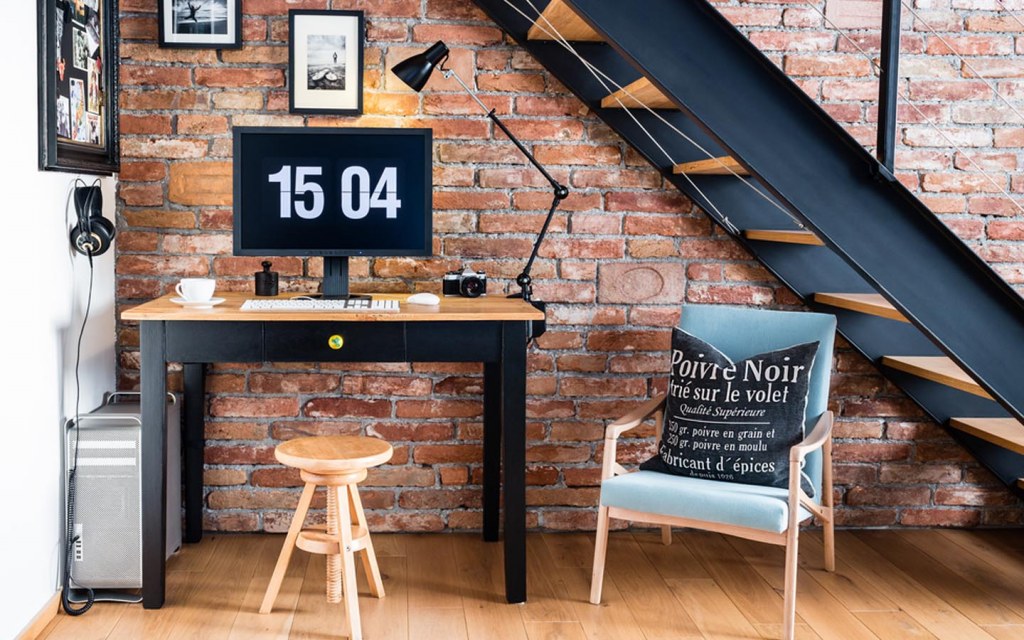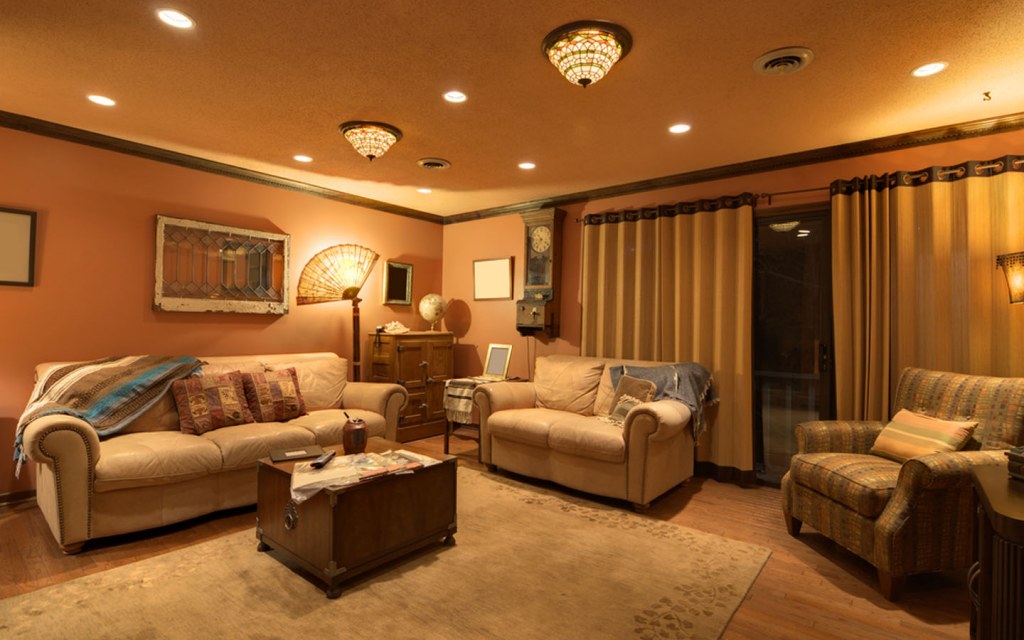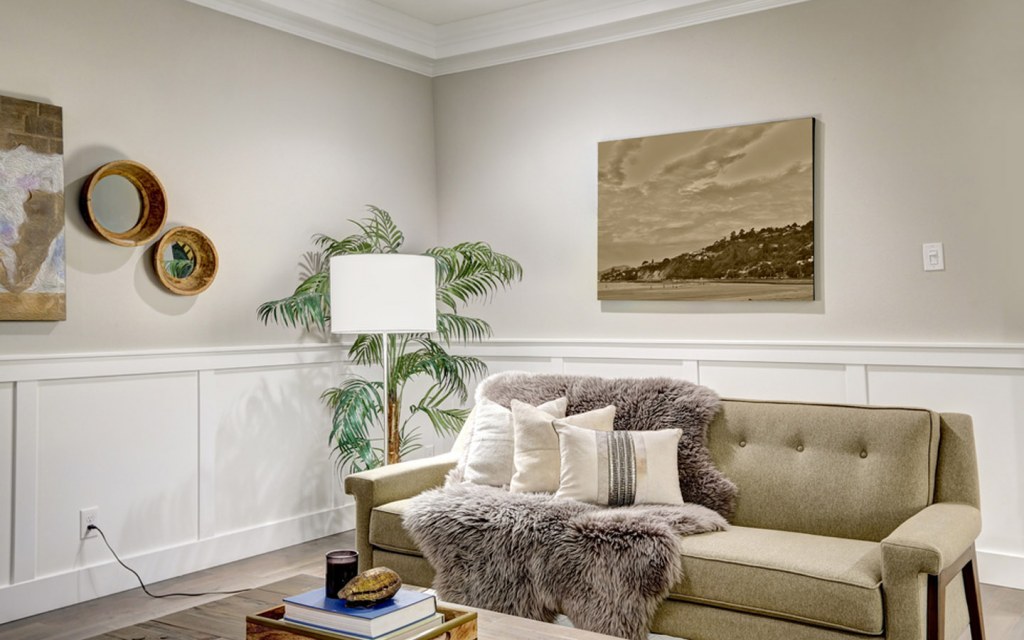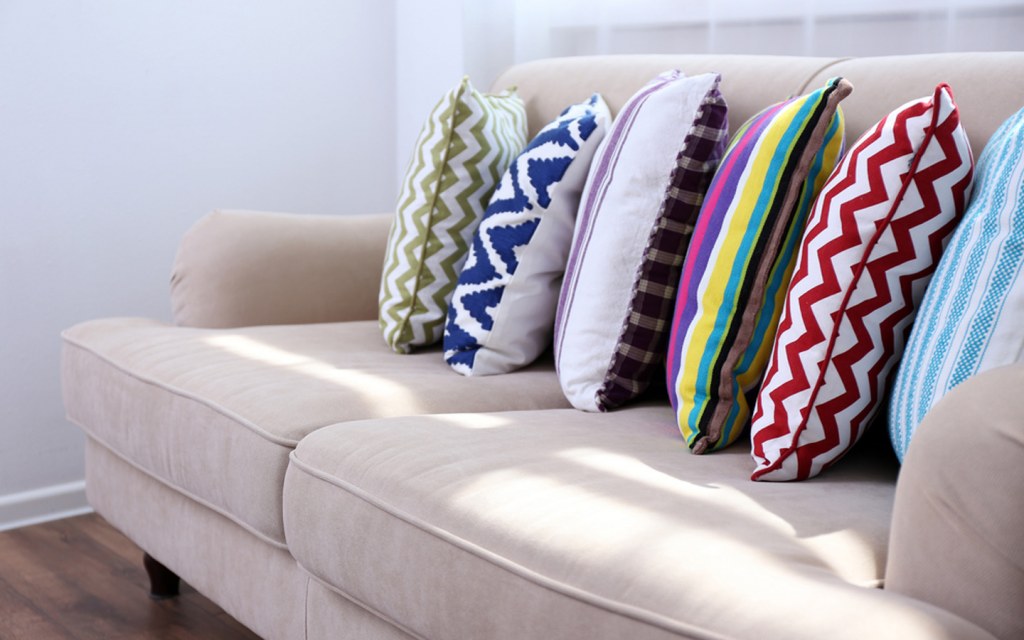Element of Art Is Used to Describe the Usable Interior Space of an Architectural Form
The art of interior designing might appear to exist uncomplicated, peculiarly since near homeowners add personal touches to their habitation's décor without even a second thought to the impact it makes on the overall entreatment. But if you talk to a professional interior decorator, they'll generally tell you that there are seven major elements of interior designing and you should always create the right balance between them for the best results.
The 7 Elements of Interior Designing
The seven primary elements of interior design are:
- Space
- Line
- Form
- Low-cal
- Colour
- Texture
- Pattern
Let'south discuss these 7 elements of design in particular below.
Space

Infinite is 1 of the well-nigh of import interior design concepts. It refers to the three-dimensional living space that needs to be decorated, including a room's meridian, length, and width. The available space should be filled with furnishings based on the purpose of the room and the functionality it is supposed to offer. However, space can exist both positive and negative. Positive space is filled with piece of furniture and décor, and negative space refers to empty spaces and bare areas. Ideally, you demand to strike the right balance betwixt these two to get the best results for your habitation's interior.
A balanced infinite is neither overcrowded, nor sparse, and at that place is room for flexibility based on the interior style yous cull. For case, minimalist interiors focus more on negative infinite, while eclectic décor leans towards positive space. However, the right amount of either space is ultimately dictated by the functionality you desire the room to offer.
Line

The boundaries of your room's furniture and its structural design combine an assortment of horizontal, vertical, and dynamic lines. Each of these types fulfils a purpose, and together, lines aid shape the room and guide your eye through it, making information technology aesthetically pleasing using unity, contrast, and harmony.
Horizontal lines are oft created by tabletops, beds, chairs, and other surface areas, and can make a space look wider while drawing your eye towards a focal indicate in the room. Nevertheless, an excess of horizontal lines can brand a infinite seem uninspired or boring. Vertical lines are reflected by windows, doorways, and cupboards, and often make the room appear taller than it is. However, use vertical lines with care equally not anybody appreciates sitting under an illusionary high ceiling. Together, horizontal lines give a feeling of stability, security, and efficiency, while vertical lines add a touch on of freedom, strength, and spaciousness to the room.
Meanwhile, dynamic lines include angular lines, often created by a staircase, which add a affect of drama to the interior, as well as curved lines constitute in couches, windows, or archways, which serve to soften the harsh angles and rigidness of the other furnishings in a room. You'll need to utilise dynamic lines sparingly, though, equally they tend to catch the centre more than horizontal and vertical lines and can overpower the room.
Nearly interior designers volition ordinarily choose one type of line equally the dominant feature based on the feeling that you lot want to create in a particular room.
Class

In easier terms, form is 1 of the vii elements of interior pattern and refers to the three-dimensional shapes of objects in a room as well as the shape of the room itself. Forms are mostly divided into geometrical forms, which are manmade, with hard lines and foursquare edges, and natural forms, which are more soft and fluid, relating to how things are found in nature. They can likewise exist accentuated using some of the other elements of interior designing, similar colours, patterns, and textures, all of which we'll discuss below.
Forms can also be categorised as open or closed. An example of the open class is the shape of the room itself, which you can walk into, while the solid furnishing within the room is an example of closed form. Shapes or forms tin can be used to create harmony in interior designing, just add besides many forms in one room, and you'll create a confused and conflicted infinite.
Calorie-free

Whether natural or manmade, calorie-free plays an important part in your home's décor and is thus, i of the most obvious elements of interior design that you need to focus on. A play of light is what enhances the effects of other elements, like patterns, colours, and textures. It is also what sets the mood and ambient of a room.
Natural light is by and large given entrance into a living space with the clever placement of windows, doors, or mirrors, and can make the space experience blusterous, open, and cheerful. Still, no room is complete without manmade low-cal fixtures, which are broadly divided into iii types—emphasis lighting, mood/ambient lighting, and chore lighting.
Accent lights usually illuminate a particular slice of wall art or sculpture to bring your focus on it. Mood or ambience lights basically prepare the tone of the overall space. Yous might utilise bright lights for a home part to stay alert while you work, merely softer ones for a cosy den or home theatre to create a more relaxed ambience.
Meanwhile, task lighting is all about throwing calorie-free onto a surface area where yous require illumination for a particular purpose/task, such as desk-bound lamps in home offices, under the cabinet lights in a kitchen to illuminate the countertop, or bedside lamps to help yous find your property at night.
Ultimately, the choice of lighting depends on the functionality of the room yous're decorating. You volition and then need to cull the right low-cal fixtures for your home appropriately, keeping in mind that each fixture will also add an boosted visual element to the rooms.
Colour

Adding to the artful entreatment of whatsoever interior, colours demand no introduction. Nosotros all have our favourite colours that we love to wear or decorate the house with. However, if you take a look at colour psychology, colours impact the mood and the personality of the residents, leading u.s.a. to the determination that some hues are simply more appropriate for a harmonious interior.
For example, red often enhances appetite and is, therefore, more advisable for your kitchen or dining area, while blues and greens induce calmness and tranquillity, making them perfect for bedrooms.
Colours can exist categorised into primary and secondary colours, with further sub-classifications likewise. Moreover, each color has varying hues, intensity, and values that have the ability to bear upon a person'south moods, emotions, memories, every bit well every bit the size of a room. Before choosing the colour scheme, define the room'south part and gene in the light in the interior space considering night rooms with darker color schemes can get brooding or claustrophobic, but the same color scheme with bright lights can actually seem energetic.
Texture

Textures enter an interior design via the surface area of whatsoever object or furniture. You can get sleeky and smooth textures via marble countertop and drinking glass tables, soft and cosy textures using fur rugs or throws, or even coarse and rough textures with the apply of fabrics for your upholstery. Textures, however, do not just refer to the actual texture of a surface when you touch it.
We as well identify with textures visually, especially when they are combined with patterns. For case, a bed with a silk bedsheet and a cosy quilt is not just soft to the touch but also looks soft, comfy, and inviting. Primarily incorporated into homes using fabrics, every room needs at least one contrasting texture to avoid monotony and give the room an additional depth.
Design

Pattern is the last of the 7 major interior blueprint concepts, but it is what gives life to an interior. Stripes, plaids, florals, animal prints, geometric patterns, and motifs all add their own soul to the room, irrespective of whether they are used in fabrics, wallpapers, paints, rugs, or wall fine art. Patterns are also often repetitive, offering a polish transition across the room, but can vary in colours and textures.
The best way to incorporate patterns into your home's décor is to know exactly how much is plenty. In modest rooms, minor patterns, used sparingly, tin burnish upwardly the infinite, just large motifs will overpower and dominate the surface area, making it feel clustered.
Y'all'll also need to choose patterns based on the interior style of the house, as modern interiors connect with lines, stripes, and geometric patterns. In contrast, traditional interiors are big on floral prints. You lot tin also use patterns to create a focal point in your room; however, it is ideal to use no more than than 3 patterns in similar colour schemes for a harmonious entreatment.
Now y'all know all about the seven key elements of interior designing and how to create a balance between them for a harmonious interior. Remember that each individual might remember that one of these elements is more important than the residue, so be sure to go out your personal preferences bated for the best results.
I of the major benefits of hiring a professional interior designer is that they will exist aware of all of these elements and how to residual them in the all-time way possible according to your interior without being partial to whatsoever 1 element. Professional person designers are also aware of some of the acme interior design styles that you tin can incorporate into your home and can help you out in that regard as well. So, you can consider seeking professional help in the matter.
Stay tuned to Zameen Blog for more home décor related posts and achieve out to us at blog@zameen.com if y'all have any feedback or suggestions for us.
Source: https://www.zameen.com/blog/elements-interior-designing.html
0 Response to "Element of Art Is Used to Describe the Usable Interior Space of an Architectural Form"
Post a Comment